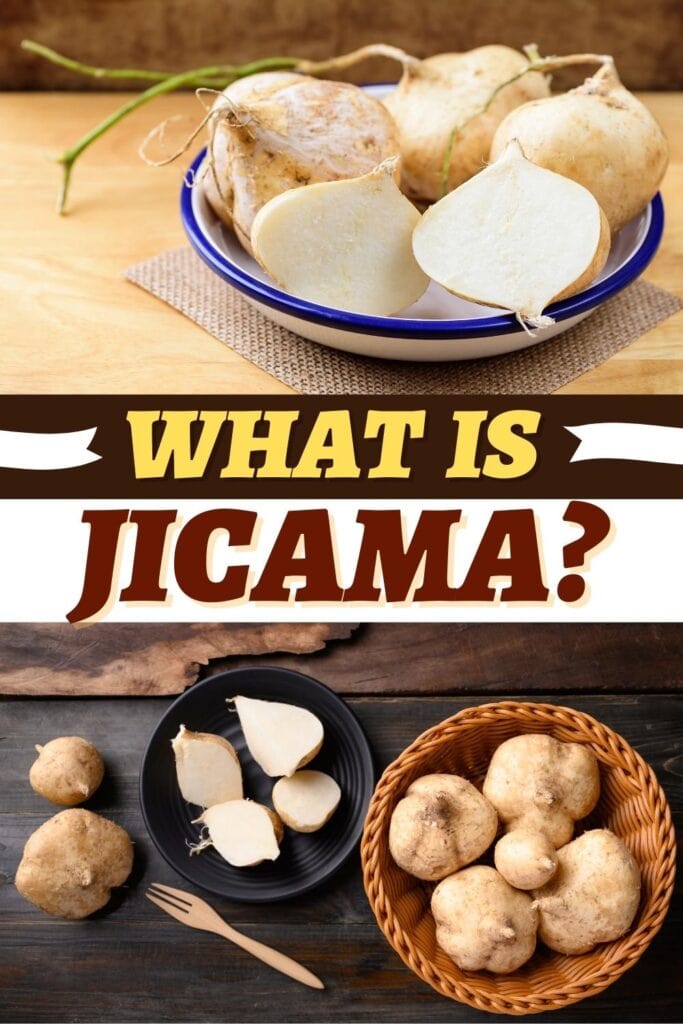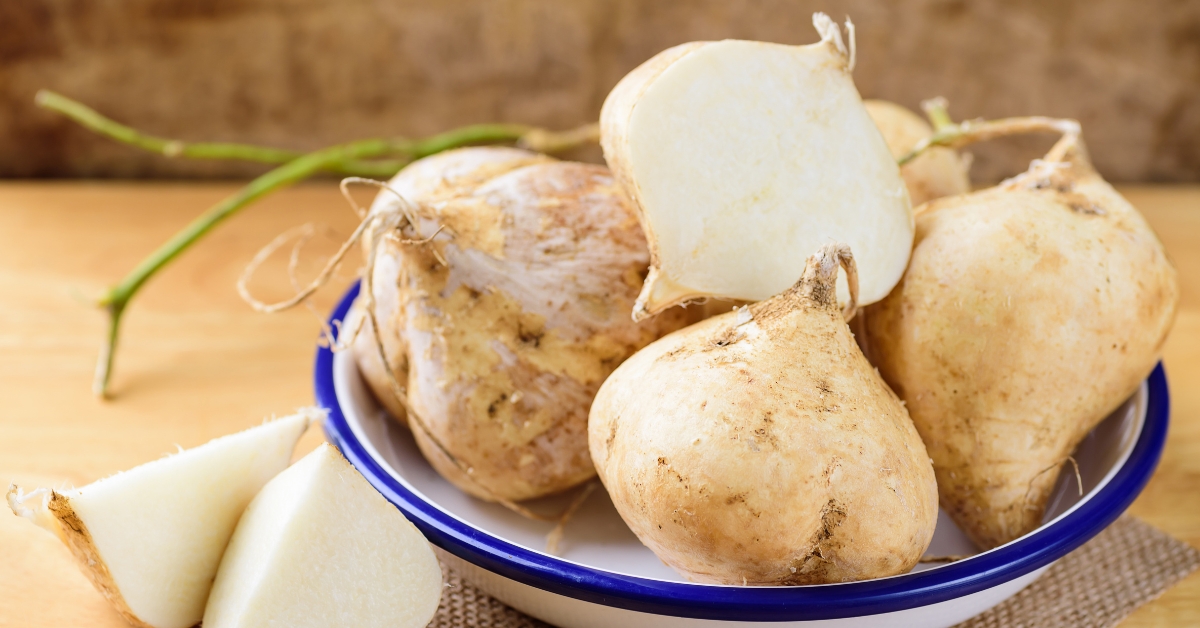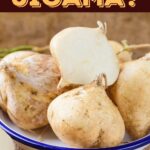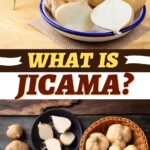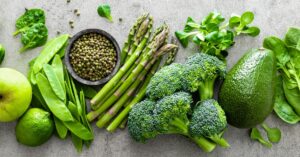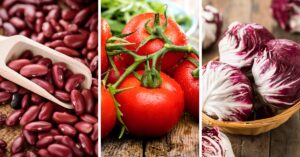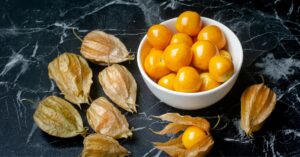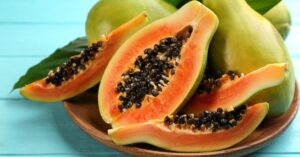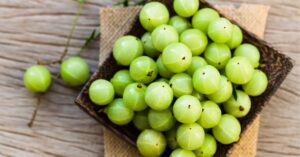If you’ve recently stumbled across jicama, you’re probably asking yourself, what is jicama?
Well, I’m here to tell you all about it!
This peculiar-looking root is a staple in Mexican cuisine. It’s common in Asian food, too.
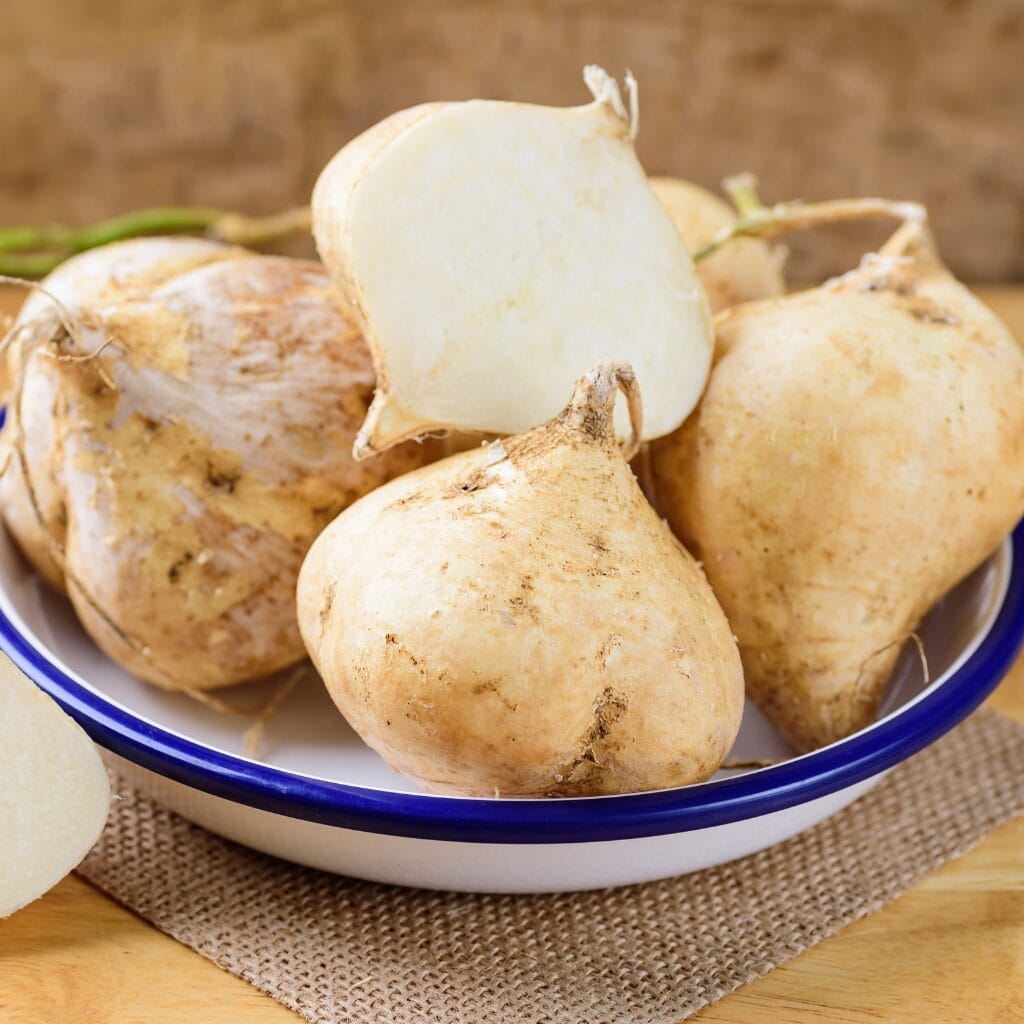
So if you like either of those things, you’ll fall in love with jicama.
It’s a crunchy, refreshing, and scrumptious ingredient to add to your plate.
Not only is it tasty, but it has health benefits, too.
So let’s explore jicama and answer the burning question, “What is jicama?”
What Is Jicama?
Jicama is a root vegetable widely used in Mexican cuisine. Native to Mexico, jicama thrives in warm tropical areas.
It comes from the Pachyrhizus erosus vine, which is part of the pea family.
Unlike other peas, the ones this vine produces are toxic. As are the flowers and the leaves.
So it’s best to stick with just the edible jicama flesh.
Also known as the Mexican potato, Mexican turnip, sweet turnip, Chinese potato, and yam bean, jicama goes by many names.
I know you must be wondering how a native Mexican plant became referred to as a Chinese potato.
After all, these two countries are on completely different continents!
Back in the 17th century, Spaniards brought jicama to Asia. The love for this root spread far and wide across the continent.
Nowadays, you can find jicama in many different countries.
Regardless of what you call it, jicama is super tasty.
You can identify it by the white crunchy flesh that’s wrapped in a paper-thin brown skin.
It sort of looks like a hybrid between a potato and a turnip. But the flavor and the texture are unique.
Give it a try and you’ll notice it has quite the snap.
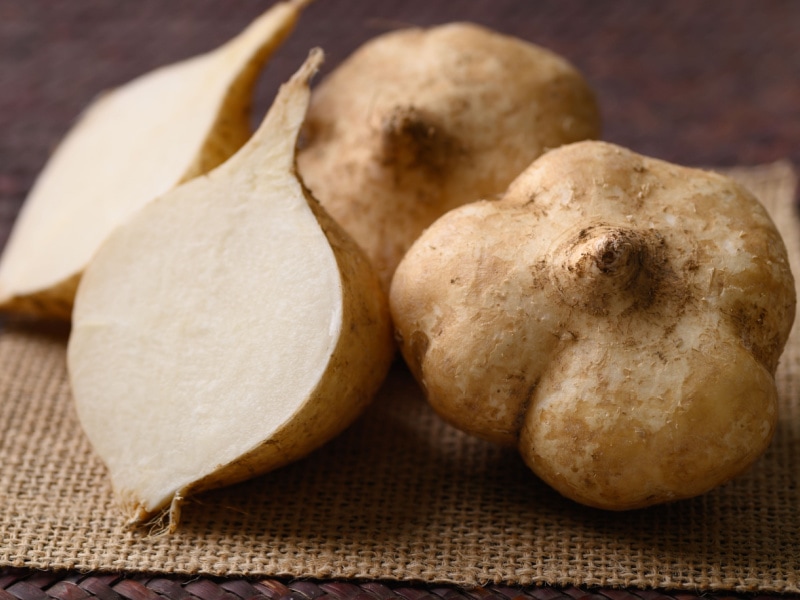
What Does Jicama Taste Like?
Looking at this root, you’d expect it to taste like a potato. But you’re in for quite the surprise!
Jicama has a rather interesting flavor and texture. And it’s a lot more refreshing than a potato.
It’s crunchy, starchy, and juicy with a mildly sweet and slightly nutty flavor.
It sort of tastes like an apple with the texture of a potato. Except it’s not as sweet and with fewer carbs.
Many describe the texture as being like a water chestnut.
Due to the high water content, jicama is very crisp. So it’s easy to see why it’s a popular ingredient in slaws and salads.
How to Use Jicama
Now comes the fun part, jicama recipes! From salsa to fries, there are a bunch of yummy uses for jicama.
The best is a Mexican fruit cup. This is a Mexican street food favorite, particularly on a hot day.
You peel and slice jicama into strips. Do the same with cucumber and mango. Slice up some pineapple and watermelon too.
Pack the fruit into a cup, give it a squeeze of lime, and a dusting of Tajin seasoning. It’s juicy, spicy, and super refreshing.
You can also add jicama to tacos, salads, salsas, and slaws.
It goes well with tropical fruit, citrus fruits, cucumber, grilled seafood, and pork.
It’s common in Asian foods like lumpia, fresh spring rolls, and stir-fries.
I like to slice it up with other veggies and pair it with hummus as an appetizer.
Due to its crisp and juicy texture, it’s most often eaten raw.
If you want to cook jicama, there are plenty of options too.
Steamed, roasted, pan-fried, or baked, you can cook it in several ways.
I like to bake jicama like potatoes for a healthy fries alternative.
I cut it into matchsticks, lightly toss it in olive oil, and sprinkle it with spices.
Keep in mind, the skin is toxic. So no matter how you prepare jicama, be sure to completely peel off the skin.
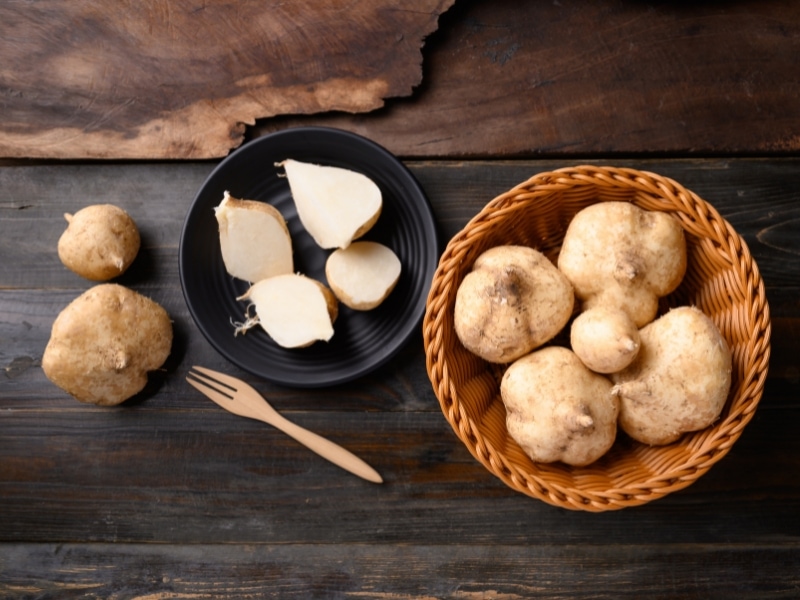
Jicama Nutrition
Jicama not only tastes great, but it’s healthy, too. If you’re trying to eat better, add it to your plate.
It’s low in calories, high in fiber, and packed with vitamin C.
Jicama is also a good source of vitamin B-6, which helps with energy and brain function.
And that’s just the start. This root is full of other vitamins, minerals, and antioxidants.
Jicama also contains inulin. Not to be confused with insulin, inulin is a prebiotic great for gut health.
The benefits don’t stop there.
Jicama can help you manage your blood sugar and weight.
It’s also good for your bones, boosts immunity, aids digestion, and supports heart health.
Thanks to the high water content, it helps with hydration, too.
Now, that’s one nutrient-dense veggie!
Overall, it’s a smart choice, especially if you’re trying to eat a cleaner diet and looking to branch out with your veggies.
Where to Buy Jicama
Thanks to its growing popularity, jicama is easier to find than you might think.
Look for it in the produce section at a grocery store near you. Most major supermarkets carry this root.
Mexican grocery stores are almost guaranteed to have it. You can also try other specialty food stores and farmer’s markets.
Like many other fruits and veggies, jicama is available year-round.
When picking out jicama, it should be firm to the touch. If it’s soft or shriveled, it’s past its prime.
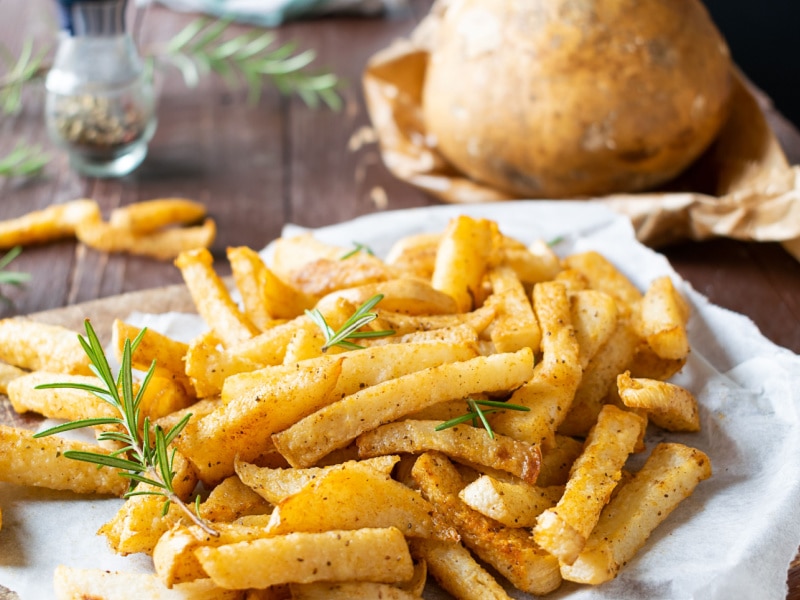
How to Store Jicama
Jicama doesn’t require any special storage that’s out of the ordinary.
Simply place it on the counter. It should be kept at room temperature and avoid direct sunlight.
When stored like this, jicama will last for about a week.
Alternatively, you can store it in the fridge for about 2 weeks.
Keep it in the crisper or on a shelf that’s not the coldest part of the fridge.
Avoid storing it in damp or humid places. Also, don’t wash it until you’re ready to eat it.
If you only use part of it, wrap it tightly in plastic and place it in the fridge. It will stay good for a few days.
But like all things, fresh is best. So use it up if you can.
Oh, and here’s a pro tip for you. Squeeze a little bit of lemon on sliced jicama to slow discoloration.
For longer storage, freeze it. You can freeze jicama whole or sliced.
Be sure it’s dry and wrap it up tight.
For the whole jicama, aluminum foil will do. For sliced jicama, a freezer bag or an air-tight container will suffice.
When kept properly, it will stay good in the freezer for about 6 months.
